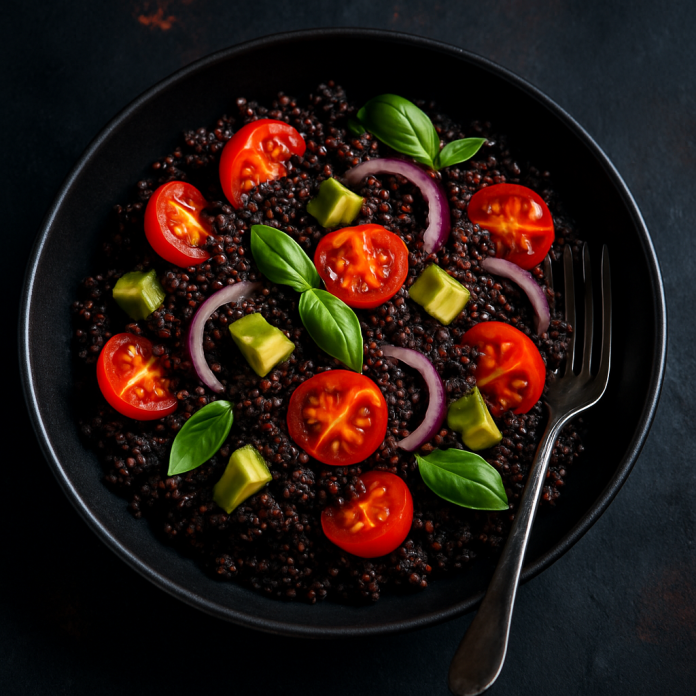Everything you need to know about this nutritional powerhouse and how to cook it right
Quinoa has become one of the most popular health foods in American kitchens, but many people don’t realize this protein-packed superfood isn’t actually a grain. This ancient seed offers complete nutrition and versatility that has made it a staple for health-conscious cooks.
Pronounced “KEEN-wah,” quinoa comes from the flowering plant Chenopodium quinoa and provides all nine essential amino acids that our bodies need. Understanding its history, varieties, and proper cooking techniques can help you make the most of this nutritional powerhouse.
The Ancient Origins of Quinoa
Quinoa has been cultivated for over 5,000 years in the Andes mountains of Peru, Bolivia, Ecuador, and Chile. The Inca civilization called it “chisaya mama” or “mother of all grains” and considered it sacred, treating it as more valuable than gold.
This hardy crop thrived at altitudes up to 13,000 feet where other grains couldn’t survive. Quinoa sustained entire civilizations through harsh mountain conditions, providing complete nutrition when other foods were scarce.
Spanish conquistadors nearly eliminated quinoa cultivation, forcing indigenous farmers to grow European crops instead. The ancient superfood survived only in remote mountain communities until researchers rediscovered its exceptional nutritional value in the 1970s.
The United Nations recognized quinoa’s potential to address global hunger and malnutrition, declaring 2013 the “International Year of Quinoa.” This acknowledgment helped bring the ancient seed to worldwide attention.
Understanding Different Quinoa Varieties
Modern grocery stores offer several quinoa varieties, each with distinct characteristics and cooking properties:
White Quinoa The most common variety offers a mild, nutty flavor and fluffy texture when cooked. White quinoa cooks quickly in 12-15 minutes and works well as a rice substitute or base for various dishes.
Red Quinoa Red quinoa provides a heartier texture and more robust flavor than white quinoa. It holds its shape well during cooking, making it excellent for salads and grain bowls. Cooking time is 15-20 minutes.
Black Quinoa This variety delivers the strongest flavor with earthy, slightly sweet notes. Black quinoa maintains its dramatic color after cooking and adds visual appeal to dishes. It requires 20-25 minutes of cooking time.
Tri-Color Quinoa This blend combines white, red, and black varieties in one package, offering varied textures and flavors in a single dish. Cooking times may vary based on the blend ratio.
Quinoa Flakes Pre-steamed and rolled quinoa flakes cook in just 90 seconds, making them perfect for quick breakfast porridge or adding to smoothies for extra protein.
Nutritional Benefits
Quinoa stands out as one of the few plant foods containing all nine essential amino acids, making it a complete protein source. One cup of cooked quinoa provides:
- 8 grams of complete protein
- 5 grams of dietary fiber
- Essential minerals including iron, magnesium, phosphorus, and potassium
- B vitamins and vitamin E
- Naturally gluten-free option for those with celiac disease or gluten sensitivity
This nutritional profile makes quinoa particularly valuable for vegetarians, vegans, and anyone looking to increase their protein intake from plant sources.
Three Easy Quinoa Recipes
Basic Fluffy Quinoa
Serves 4
Ingredients:
- 1 cup quinoa (any variety)
- 2 cups water or broth
- 1/2 teaspoon salt
Instructions:
- Rinse quinoa in fine-mesh strainer until water runs clear
- Combine quinoa, liquid, and salt in medium saucepan
- Bring to boil, reduce heat to low, cover
- Simmer 12-20 minutes (depending on variety) until liquid absorbs
- Remove from heat, let stand 5 minutes
- Fluff with fork before serving
Mediterranean Quinoa Salad
Serves 6
Ingredients:
- 2 cups cooked quinoa, cooled
- 1 cucumber, diced
- 1 cup cherry tomatoes, halved
- 1/2 red onion, finely chopped
- 1/2 cup kalamata olives, pitted and halved
- 1/4 cup olive oil
- 2 tablespoons lemon juice
- 1 teaspoon dried oregano
- Salt and pepper to taste
- 1/2 cup crumbled feta cheese
Instructions:
- Combine cooled quinoa with cucumber, tomatoes, onion, and olives
- Whisk together olive oil, lemon juice, oregano, salt, and pepper
- Pour dressing over quinoa mixture, toss well
- Top with feta cheese
- Chill 30 minutes before serving
Quinoa Breakfast Bowl
Serves 2
Ingredients:
- 1 cup cooked quinoa
- 1 cup milk (dairy or plant-based)
- 2 tablespoons maple syrup
- 1/2 teaspoon vanilla extract
- 1/4 teaspoon cinnamon
- Fresh berries
- Chopped nuts
- Additional maple syrup for drizzling
Instructions:
- Combine cooked quinoa with milk in saucepan
- Heat over medium heat until warmed through
- Stir in maple syrup, vanilla, and cinnamon
- Divide between two bowls
- Top with fresh berries and nuts
- Drizzle with additional maple syrup if desired
Essential Cooking Tips
Proper rinsing is crucial: Quinoa has a natural coating called saponin that can taste bitter. Place quinoa in a fine-mesh strainer and rinse under cold running water for 2-3 minutes, rubbing the seeds together with your hands. Continue rinsing until the water runs clear instead of cloudy or foamy.
Toasting enhances flavor: Dry-toasting quinoa in a pan for 2-3 minutes before adding liquid enhances its natural nutty flavor.
Use the right ratio: The standard ratio is 1 cup quinoa to 2 cups liquid, though some prefer 1:1.5 for a firmer texture.
Avoid lifting the lid: Like rice, quinoa cooks best with consistent steam. Resist the urge to check on it during cooking.
Let it rest: After cooking, let quinoa rest off heat for five minutes to allow remaining moisture to distribute evenly throughout the seeds.
Storage and Shopping Tips
Store dry quinoa in airtight containers in a cool, dry place for up to three years. Cooked quinoa keeps in the refrigerator for up to one week or freezes for up to eight months.
Look for quinoa in the grain aisle, health food section, or bulk bins at your local grocery stores. Many stores including Giant Eagle, Whole Foods, and Fresh Thyme carry multiple varieties.
Quinoa’s journey from sacred Incan crop to modern superfood demonstrates the value of preserving traditional foods and agricultural wisdom. With proper preparation techniques and creative recipes, this versatile seed can become a nutritious staple in any kitchen.
Discover more from Northeast Ohio News
Subscribe to get the latest posts sent to your email.












